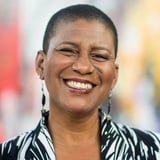Summary
The speaker recounted their experience working within New York City's government to improve services for the street homeless population through the Homestat program initiated by Mayor de Blasio in 2016. They emphasized the challenge of bridging knowledge gaps among stakeholders who were experts only in parts of the service. By gaining access to frontline outreach teams and directly engaging with individuals experiencing homelessness, the design team created detailed journey maps that illuminated service complexities and enabled shared understanding through stakeholder workshops. These artifacts informed policy, a new case management system, and public dashboards to guide outreach efforts. The team also supported high-level case conferences to improve inter-agency collaboration and helped build design culture throughout the city’s vast workforce by developing toolkits and coaching public servants on design principles. Their work notably helped move 690 people into housing over one year and fostered trust and new ways of working between technologists, program managers, and policy makers. The speaker closed by encouraging others to define mission, principles, tools, and impact goals when building design capacity in large public systems.
Key Insights
-
•
Direct field research with vulnerable populations builds deep empathy critical for service design.
-
•
Multiple stakeholders often lack a shared understanding of end-to-end service journeys.
-
•
Digital journey maps can effectively replace physical sticky note methods for broader sharing.
-
•
Bringing frontline staff, policy makers, and designers together for reflection accelerates shared understanding and vision.
-
•
Design-informed public dashboards empower both providers and the public with actionable data.
-
•
Strong relationships built by designers enable technology teams to better co-create solutions with stakeholders.
-
•
Embedding design research into policy documents humanizes and strengthens them.
-
•
Case conferences staffed with design evidence help coordinate cross-agency homeless service efforts.
-
•
Building a government-wide design culture requires defining mission, principles, tools, and measurable goals.
-
•
Toolkits tailored for design-curious public servants help spread design practices beyond professional designers.
Notable Quotes
"It can take hundreds of these contacts before they start to trust."
"We must put our citizens at the center of every service."
"People didn’t understand the service end to end. They were experts at their piece."
"It would have been really easy for the program manager for street homelessness to say no, but instead she gave us access."
"We gave everyone this beautiful artifact and we asked them to draw on it, to correct our mistakes."
"This was a transformational day where everyone got to join together."
"We helped through Homestat last year to move 690 people into housing."
"It’s really important that we have impact goals. It’s not worth doing design if we’re not having impact on our residents."
"We’re creating a design committee that will help coach our agency colleagues on scopes of work and the design process."
"The first time I read [the comprehensive homelessness policy], I actually found myself tearing up."
Or choose a question:
















More Videos

"We are truly in a golden age for our profession."
Doug PowellClosing Keynote: Design at Scale
November 8, 2018

"If a group session with middle schoolers goes off the rails, one-on-one sessions can save the research."
Mila Kuznetsova Lucy DentonHow Lessons Learned from Our Youngest Users Can Help Us Evolve our Practices
March 9, 2022

"Every parent we talked to had some variation of the question: this exists, can I use it right now? Where was this when I needed to apply?"
Sarah GallimoreInspire Progress with Artifacts from the Future
November 18, 2022

"Simply asking stakeholders what success looks like for them in a project is a powerful way to start meaningful conversations."
Lada Gorlenko Sharbani Dhar Sébastien Malo Rob Mitzel Ivana Ng Michal Anne RogondinoTheme 1: Discussion
January 8, 2024

"AI is just a better version of the tools you’re already using to refine ideas and express thoughts."
Alnie FigueroaThe Future of Design Operations: Transforming Our Craft
September 10, 2025

"Every board member can interpret an NPS score differently depending on their role and responsibilities."
Landon BarnesAre My Research Findings Actually Meaningful?
March 10, 2022

"I felt like a journalist pretending to be a designer."
Emily EagleCan't Rewind: Radio and Retail
June 3, 2019

"The curse of hyper-focus means you lose peripheral vision and miss the larger context and customer needs."
Malini RaoLessons Learned from a 4-year Product Re-platforming Journey
June 9, 2021

"Design is not just aesthetics; it’s about what the product feels like, sounds like, and how it differentiates in the market."
Asia HoePartnering with Product: A Journey from Junior to Senior Design
November 29, 2023
















